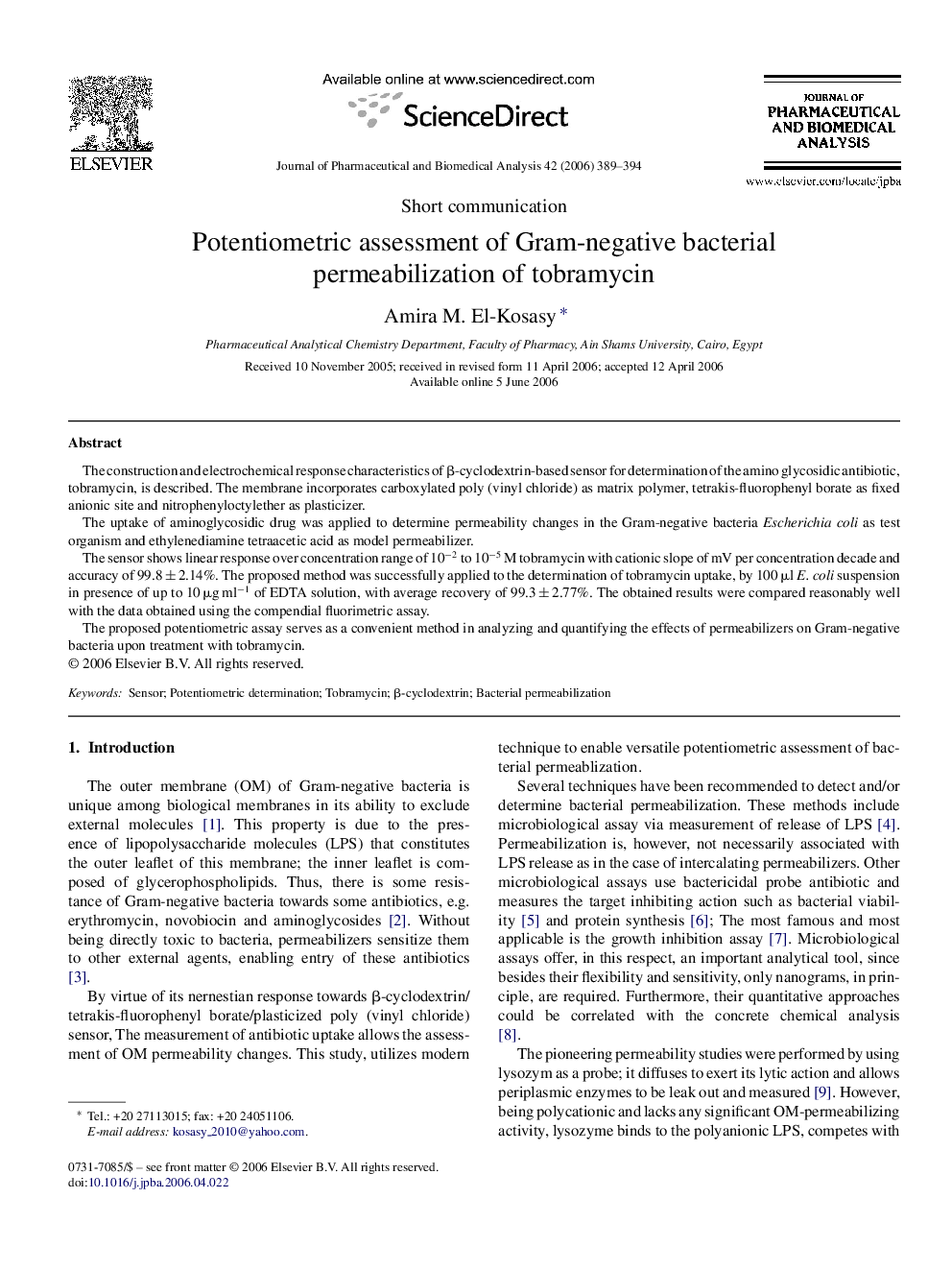| کد مقاله | کد نشریه | سال انتشار | مقاله انگلیسی | نسخه تمام متن |
|---|---|---|---|---|
| 1224277 | 967917 | 2006 | 6 صفحه PDF | دانلود رایگان |

The construction and electrochemical response characteristics of β-cyclodextrin-based sensor for determination of the amino glycosidic antibiotic, tobramycin, is described. The membrane incorporates carboxylated poly (vinyl chloride) as matrix polymer, tetrakis-fluorophenyl borate as fixed anionic site and nitrophenyloctylether as plasticizer.The uptake of aminoglycosidic drug was applied to determine permeability changes in the Gram-negative bacteria Escherichia coli as test organism and ethylenediamine tetraacetic acid as model permeabilizer.The sensor shows linear response over concentration range of 10−2 to 10−5 M tobramycin with cationic slope of mV per concentration decade and accuracy of 99.8 ± 2.14%. The proposed method was successfully applied to the determination of tobramycin uptake, by 100 μl E. coli suspension in presence of up to 10 μg ml−1 of EDTA solution, with average recovery of 99.3 ± 2.77%. The obtained results were compared reasonably well with the data obtained using the compendial fluorimetric assay.The proposed potentiometric assay serves as a convenient method in analyzing and quantifying the effects of permeabilizers on Gram-negative bacteria upon treatment with tobramycin.
Journal: Journal of Pharmaceutical and Biomedical Analysis - Volume 42, Issue 3, 26 September 2006, Pages 389–394